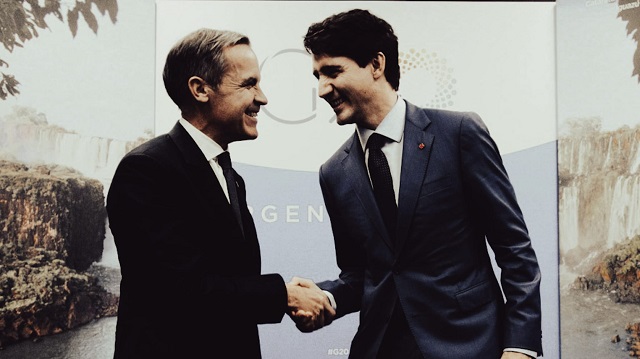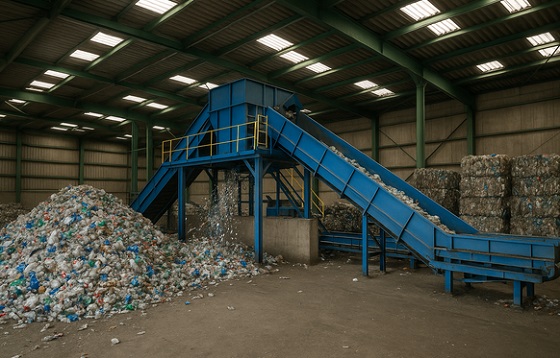Alberta
Auto Insurance affordability: Province says long term solutions may include public insurance offering

Good drivers to benefit from auto insurance changes
New reforms will address the pressing issue of automobile insurance rates in the province as the government explores longer-term solutions.
Alberta’s government is exploring every possible avenue to provide relief to Albertans. Albertans with good driving records would experience price protection, ensuring their insurance rates do not increase higher than inflation. The proposed reforms would start Jan. 1, 2024.
“We know that Albertans have been struggling with their auto insurance rates and that’s why we’ve been working hard to find solutions. I’m pleased that we can work to bring forward these new measures to help. With inflation and the affordability crisis making life more expensive for Albertans, we will continue working to ensure that the measures we take are not only affordable but also sustainable in the long run.”
Alberta’s government will be taking further action to amend regulations, ensuring that insurers must offer payment plan options so Albertans would not have to pay the full amount for their coverage upfront. These changes would ensure the auto insurance industry can continue to cover claims costs and protect Alberta drivers while providing more relief to Albertans.
Additionally, changes would grant Alberta’s Automobile Insurance Rate Board (AIRB) the authority to direct auto insurers to return premiums to Albertans in years when insurance industry profits are significantly higher. AIRB could also request a rate filing from an insurer at any time to review and possibly lower auto insurance rates if needed.
“We understand the struggles many Albertans are facing, and we are working to ensure Albertans can afford the coverage they need. Achieving affordable auto insurance is a major commitment for our government and this is only the first step in delivering on that promise. We value the sustainability of the insurance industry and call for increased collaboration from insurers as we continue the work to address these issues.”
“Affordability continues to be a major concern for Albertans when the cost on every day essentials rises and makes it tough to make ends meet. That’s why we continue to build on our existing affordability measures to help stabilize costs. This auto insurance reform will help do this in the short term.”
Alberta’s government is closely examining more long-term solutions to make Alberta’s auto insurance industry affordable and sustainable.
The current rate pause will remain in effect to ease the burden on Alberta drivers until the end of 2023. Proposed reforms for 2024 would not impose a dynamic price ceiling on the rate increases insurers can request but would help control how they are distributed among customers, particularly those with good driving records. Any rate increases in 2024 will be carefully monitored to ensure they are reasonable and justifiable. Albertans should continue to shop around to find the best insurance coverage for them.
“As the consumer representative on the Automobile Insurance Rate Board, I ensure that Alberta drivers are considered in all board decisions, including changes to insurer rating programs. I believe protecting good drivers from unexpected rate increases is a win for Alberta consumers. During a time of affordability challenges, this action will provide price stability and predictability for Alberta families.”
The government has commissioned an in-depth analysis by an external consultant concerning longer-term reforms. A draft report is expected by the end of 2023, with the final report slated for the first quarter of 2024. The results of this analysis will inform the government’s long-term reforms.
Quick facts
- The description of a driver with a good record is adapted from the AIRBs guidance for the grid rating program. This includes anyone without the following:
- one or more at-fault accidents in the last six years
- any Criminal Code traffic convictions in the last four years
- any major traffic convictions in the last three years
- more than one minor traffic conviction in the last three years
- In Alberta’s competitive marketplace, Albertans can sometimes get better rates by shopping around and exploring their options.
- Albertans should continue to work with their insurance companies or brokers to get the best rates.
- Alberta drivers can get discounts of up to 20 per cent for bundling their home and property insurance, in addition to discounts for good driving behavior.
Related information
At 17:00 of the video here, A reporter’s question about a potential public insurance offering in Alberta is confirmed.
Alberta
Low oil prices could have big consequences for Alberta’s finances

From the Fraser Institute
By Tegan Hill
Amid the tariff war, the price of West Texas Intermediate oil—a common benchmark—recently dropped below US$60 per barrel. Given every $1 drop in oil prices is an estimated $750 million hit to provincial revenues, if oil prices remain low for long, there could be big implications for Alberta’s budget.
The Smith government already projects a $5.2 billion budget deficit in 2025/26 with continued deficits over the following two years. This year’s deficit is based on oil prices averaging US$68.00 per barrel. While the budget does include a $4 billion “contingency” for unforeseen events, given the economic and fiscal impact of Trump’s tariffs, it could quickly be eaten up.
Budget deficits come with costs for Albertans, who will already pay a projected $600 each in provincial government debt interest in 2025/26. That’s money that could have gone towards health care and education, or even tax relief.
Unfortunately, this is all part of the resource revenue rollercoaster that’s are all too familiar to Albertans.
Resource revenue (including oil and gas royalties) is inherently volatile. In the last 10 years alone, it has been as high as $25.2 billion in 2022/23 and as low as $2.8 billion in 2015/16. The provincial government typically enjoys budget surpluses—and increases government spending—when oil prices and resource revenue is relatively high, but is thrown into deficits when resource revenues inevitably fall.
Fortunately, the Smith government can mitigate this volatility.
The key is limiting the level of resource revenue included in the budget to a set stable amount. Any resource revenue above that stable amount is automatically saved in a rainy-day fund to be withdrawn to maintain that stable amount in the budget during years of relatively low resource revenue. The logic is simple: save during the good times so you can weather the storm during bad times.
Indeed, if the Smith government had created a rainy-day account in 2023, for example, it could have already built up a sizeable fund to help stabilize the budget when resource revenue declines. While the Smith government has deposited some money in the Heritage Fund in recent years, it has not created a dedicated rainy-day account or introduced a similar mechanism to help stabilize provincial finances.
Limiting the amount of resource revenue in the budget, particularly during times of relatively high resource revenue, also tempers demand for higher spending, which is only fiscally sustainable with permanently high resource revenues. In other words, if the government creates a rainy-day account, spending would become more closely align with stable ongoing levels of revenue.
And it’s not too late. To end the boom-bust cycle and finally help stabilize provincial finances, the Smith government should create a rainy-day account.
Alberta
Governments in Alberta should spur homebuilding amid population explosion

From the Fraser Institute
By Tegan Hill and Austin Thompson
In 2024, construction started on 47,827 housing units—the most since 48,336 units in 2007 when population growth was less than half of what it was in 2024.
Alberta has long been viewed as an oasis in Canada’s overheated housing market—a refuge for Canadians priced out of high-cost centres such as Vancouver and Toronto. But the oasis is starting to dry up. House prices and rents in the province have spiked by about one-third since the start of the pandemic. According to a recent Maru poll, more than 70 per cent of Calgarians and Edmontonians doubt they will ever be able to afford a home in their city. Which raises the question: how much longer can this go on?
Alberta’s housing affordability problem reflects a simple reality—not enough homes have been built to accommodate the province’s growing population. The result? More Albertans competing for the same homes and rental units, pushing prices higher.
Population growth has always been volatile in Alberta, but the recent surge, fuelled by record levels of immigration, is unprecedented. Alberta has set new population growth records every year since 2022, culminating in the largest-ever increase of 186,704 new residents in 2024—nearly 70 per cent more than the largest pre-pandemic increase in 2013.
Homebuilding has increased, but not enough to keep pace with the rise in population. In 2024, construction started on 47,827 housing units—the most since 48,336 units in 2007 when population growth was less than half of what it was in 2024.
Moreover, from 1972 to 2019, Alberta added 2.1 new residents (on average) for every housing unit started compared to 3.9 new residents for every housing unit started in 2024. Put differently, today nearly twice as many new residents are potentially competing for each new home compared to historical norms.
While Alberta attracts more Canadians from other provinces than any other province, federal immigration and residency policies drive Alberta’s population growth. So while the provincial government has little control over its population growth, provincial and municipal governments can affect the pace of homebuilding.
For example, recent provincial amendments to the city charters in Calgary and Edmonton have helped standardize building codes, which should minimize cost and complexity for builders who operate across different jurisdictions. Municipal zoning reforms in Calgary, Edmonton and Red Deer have made it easier to build higher-density housing, and Lethbridge and Medicine Hat may soon follow suit. These changes should make it easier and faster to build homes, helping Alberta maintain some of the least restrictive building rules and quickest approval timelines in Canada.
There is, however, room for improvement. Policymakers at both the provincial and municipal level should streamline rules for building, reduce regulatory uncertainty and development costs, and shorten timelines for permit approvals. Calgary, for instance, imposes fees on developers to fund a wide array of public infrastructure—including roads, sewers, libraries, even buses—while Edmonton currently only imposes fees to fund the construction of new firehalls.
It’s difficult to say how long Alberta’s housing affordability woes will endure, but the situation is unlikely to improve unless homebuilding increases, spurred by government policies that facilitate more development.
-

 2025 Federal Election2 days ago
2025 Federal Election2 days agoMark Carney: Our Number-One Alberta Separatist
-

 2025 Federal Election2 days ago
2025 Federal Election2 days agoNine Dead After SUV Plows Into Vancouver Festival Crowd, Raising Election-Eve Concerns Over Public Safety
-

 2025 Federal Election2 days ago
2025 Federal Election2 days agoColumnist warns Carney Liberals will consider a home equity tax on primary residences
-

 International2 days ago
International2 days agoJeffrey Epstein accuser Virginia Giuffre reportedly dies by suicide
-

 2025 Federal Election1 day ago
2025 Federal Election1 day agoCanada is squandering the greatest oil opportunity on Earth
-

 International1 day ago
International1 day agoU.S. Army names new long-range hypersonic weapon ‘Dark Eagle’
-

 Addictions17 hours ago
Addictions17 hours agoFour new studies show link between heavy cannabis use, serious health risks
-

 Business19 hours ago
Business19 hours agoOttawa’s Plastics Registry A Waste Of Time And Money



